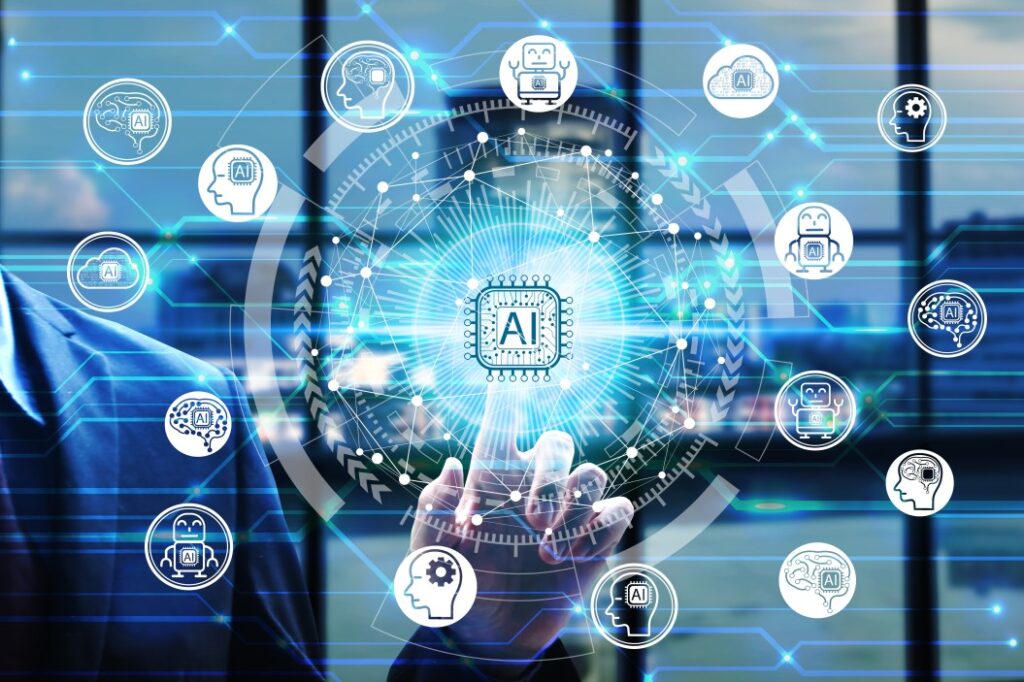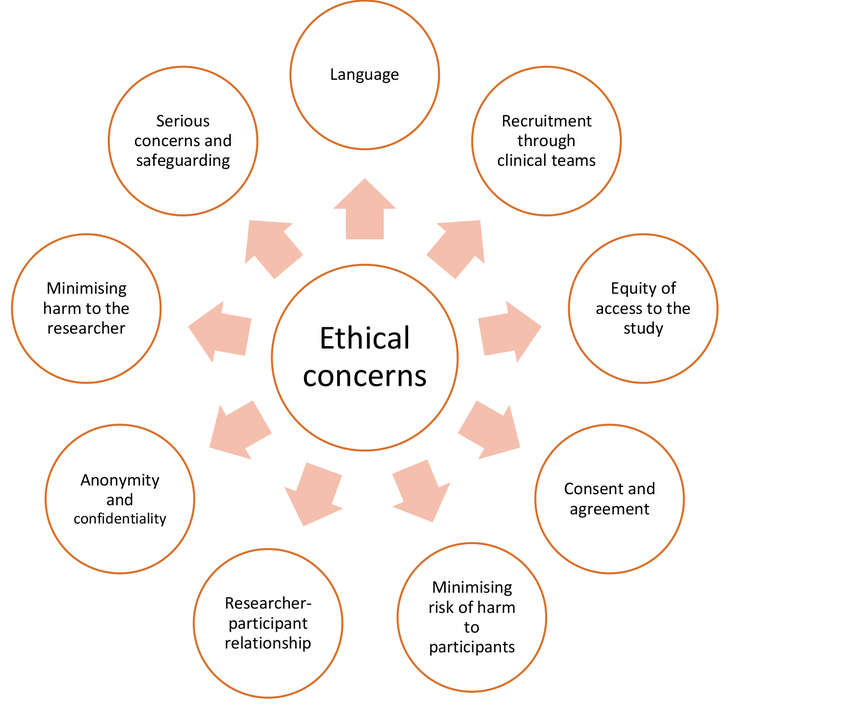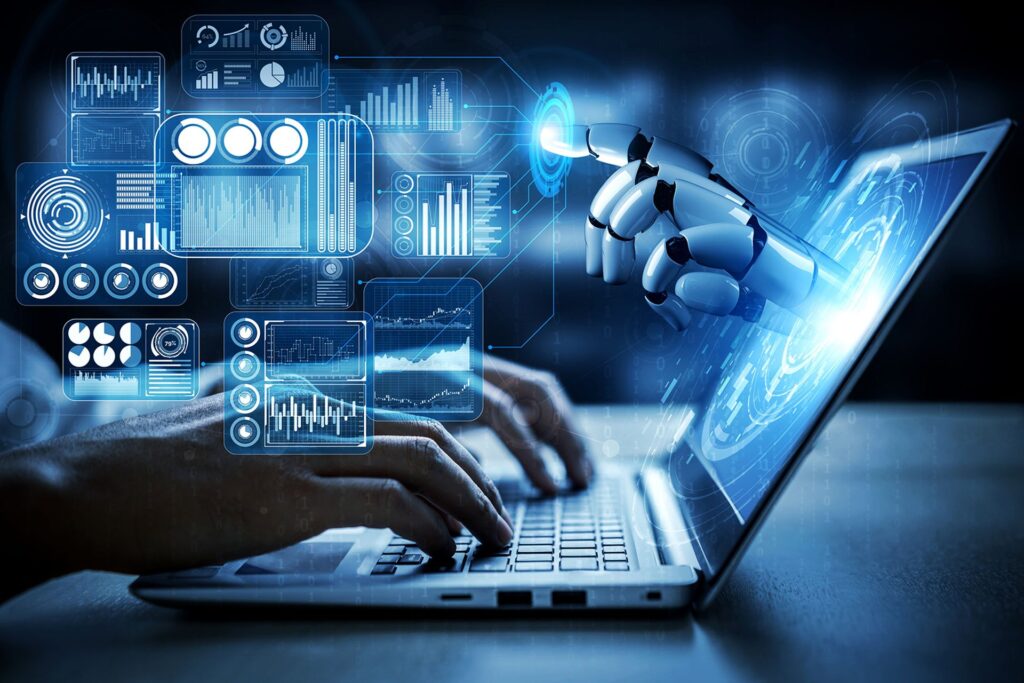Artificial intelligence has completely changed a number of industries and is currently revolutionising how we work and live.is having a huge impact in a variety of industries, from manufacturing to marketing to healthcare. We will cover all the advantages of using at work in this extensive talk, focusing on how it can improve productivity, efficiency, decision-making, and innovation. We will also look at the possible issues and moral questions raised by the use of AI in the workplace.

I. Enhanced Productivity
The significant boost in productivity that comes with implementing AI in your business is one of the main advantages. Employees can concentrate on more worthwhile duties by automating tedious and time-consuming operations with the help of AI-powered tools and systems. Here are some examples of how AI boosts productivity:
Automated Data Entry and Processing: Algorithms can quickly and accurately collect and analyses data from a variety of sources, including papers, emails, and databases. As a result, there is less need for manual data entry, which lowers mistake rates and frees up critical time.
Virtual Assistants: Chatbots and other virtual assistants can answer common client questions, freeing up customer service agents to handle more complicated situations. This 24-hour assistance raises client satisfaction and guarantees that no question goes unanswered.
Task Automation: AI may automate repetitive tasks in sectors like banking, HR, and logistics. It can manage inventory, schedule meetings, provide financial reports, and speed up the hiring process, for example, relieving administrative pressure on workers.
Content Generation: The creation of articles, reports, and marketing materials may be done swiftly with driven content generating technologies. can greatly speed up content generation, which makes it extremely valuable in content-intensive businesses even though human control is still necessary.
AI
II. Improved Efficiency

increases output but also improves overall effectiveness in a number of ways:
Predictive Analytics: Predictive analytics enabled by is more accurate than conventional approaches at predicting trends, consumer behaviour, and market dynamics. Businesses may now allocate resources more effectively and decide with more knowledge thanks to this.
Supply Chain Optimization: By analysing real-time data, algorithms can optimise supply chain processes to cut costs, shorten lead times, and enhance inventory management. Operations are made easier, and money is saved.
Quality Control: powered visual inspection systems may accurately find flaws and irregularities in production. This prevents waste and minimises warranty claims by ensuring that only top-notch products are released onto the market.
Energy Efficiency: can reduce energy use in commercial and industrial processes. It may modify lighting, heating, and cooling systems according to occupancy and environmental factors, resulting in significant energy savings.
III. Informed Decision-Making
enables businesses to make better decisions by offering data-driven insights and suggestions.
Data Analysis: is able to evaluate enormous amounts of data from numerous sources, spotting patterns and trends that human analysts might overlook. This data-driven strategy enables organizations to base choices on facts rather than gut feelings.
Personalized Recommendations: algorithms analyse user behaviour and preferences in industries like e-commerce and digital marketing to provide tailored product suggestions. Sales and customer satisfaction go up as a result.
Risk Assessment: In the areas of banking, insurance, and cybersecurity, can evaluate and reduce risks. Models for machine learning are able to spot fraudulent activity, assess creditworthiness, and anticipate security flaws.
Healthcare Diagnosis: Diagnostic tools with capabilities can help medical personnel by examining clinical data, patient records, and medical imagery. As a result, diagnoses and treatment suggestions are more accurate.
IV. Innovation and Creativity

only streamlines current procedures but also encourages creativity and innovation.
Research and Development: By analysing large databases, simulating experiments, and spotting possible breakthroughs, helps speed up research and development. Aerospace, materials research, and the pharmaceutical industry all benefit greatly from this.
Content Creation: Recently, there has been increased interest in the creation of art, music, and literature by can help artists and content producers by creating ideas, drawing draughts, or inspiring them—without taking the place of human creativity.
Product Design: By modelling different configurations and testing prototypes virtually, can improve product design. As a result, product development takes less time and money and might result in more creative designs.
Market Insights: Market research tools powered by may examine competition strategies, customer sentiment, and social media trends. This aids companies in locating undiscovered market trends and possibilities.
V. Ethical Considerations

Although has many advantages, it also brings up ethical issues that need to be addressed:
Bias and Fairness: Biases inherent in training data may be perpetuated by algorithms, resulting in biassed decisions being made in the hiring, lending, and criminal justice processes. A significant ethical concern is ensuring fairness and equity in systems.
Privacy: Privacy issues arise from the gathering and analysis of personal data by systems. Firm data protection procedures and open data policies must be implemented by companies.
Transparency and Accountability: It can be difficult to comprehend some systems’ decision-making processes due to their “black-box” nature. For trust and ethical use, systems must ensure accountability and transparency.

Job Displacement: Concerns regarding job displacement have been raised as duties are automated by However, the development, upkeep, and supervision of can also result in new employment opportunities.
Conclusion
Applying to your work has a wide range of advantages. The benefits of in the workplace include increased productivity, increased efficiency, informed decision-making, and the promotion of innovation. However, it is crucial to carefully manage the ethical issues and difficulties posed by the incorporation of AI.
influence in our professional lives will only grow as it develops. Businesses that adopt AI technology while adhering to moral standards will fare better in a world that is increasingly driven by Businesses may unleash new levels of productivity, efficiency, and innovation by utilizing which will eventually spur growth and success in the current era.

1 thought on “The Benefits of Applying AI For Your Work in 2023”